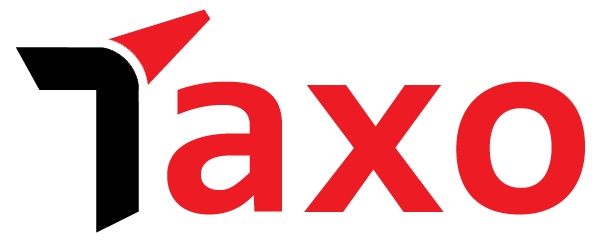With the intent to promote the use of digital mode of payment, the government introduced the provision of Dynamic Quick Response (QR) Code vide Notification No. 14/2020-CT dated 21/03/2020 determining the applicability of Dynamic QR Code and its effective date. Initially, Dynamic QR code was to be implemented w.e.f. 1st October 2020 which was later on extended to 1st December 2020 vide Notification No. 71/2020 dated 30th September 2020.
The provision of Dynamic QR Code has been made effective since 1st December 2020 however considering the difficulties of trade and representation thereof received from the trade and industry, the government has waived the penalty for non-compliance of the provisions of Dynamic QR from 1st December to 30th June 2021 vide Notification No. 06/2020 dated 31st March 2021 subject to the condition that the tax payer complies with the provision w.e.f. 1st July 2021. (Earlier Notification No. 89/2020 dated 29th November 2020 issued to waive penalty from 1st December to 31st March subject to the condition that tax payer complies with the provisions from 1st April 2021)
The government received various representation from trade and industry seeking clarification on applicability of Dynamic Quick Response (QR) Code on B2C (Registered person to Customer) invoices and compliance of notification 14/2020-Central Tax, dated 21st March, 2020 as amended time to time. The issues have been examined and in order to ensure uniformity in the implementation of the provisions of the law across the field formations, the Board, in exercise of its powers conferred under section 168(1) of the CGST Act, 2017, clarification was provided earlier vide circular no. 146 dated 23/02/202. Now in continuation to previous clarification, the government has further issued a Circular No.156 dated 21/06/2021 providing clarification on the issues or representation received from the trade and industry as stated in the table below:
| S. No. | Issues | Clarification |
| 1. | Whether Dynamic QR Code is to be provided on an invoice, issued to a person, who has obtained a Unique Identity Number as per the provisions of Sub-Section 9 of Section 25 of CGST Act 2017? | Any person, who has obtained a Unique Identity Number (UIN) as per the provisions of Sub-Section 9 of Section 25 of CGST Act 2017, is not a “registered person” as per the definition of registered person provided in section 2(94) of the CGST Act 2017. Therefore, any invoice, issued to such person having a UIN, shall be considered as invoice issued for a B2C supply and shall be required to comply with the requirement of Dynamic QR Code. |
| 2. | UPI ID is linked to the bank account of the payee/ person collecting money. Whether bank account and IFSC details also need to be provided separately in the Dynamic QR Code along with UPI ID? | Given that UPI ID is linked to a specific bank account of the payee/ person collecting money, separate details of bank account and IFSC may not be provided in the Dynamic QR Code. |
| 3. | In cases where the payment is collected by some person other than the supplier (ECO or any other person authorized by the supplier on his/ her behalf), whether in such cases, in place of UPI ID of the supplier, the UPI ID of such person, who is authorized to collect the payment on behalf of the supplier, may be provided? | Yes. In such cases where the payment is collected by some person, authorized by the supplier on his/ her behalf, the UPI ID of such person may be provided in the Dynamic QR Code, instead of UPI ID of the supplier. |
| 4. | In cases, where receiver of services is located outside India, and payment is being received by the supplier of services in foreign exchange, through RBI approved modes of payment, but as per provisions of the IGST Act 2017, the place of supply of such services is in India, then such supply of services is not considered as export of services as per the IGST Act 2017; whether in such cases, the Dynamic QR Code is required on the invoice issued, for such supply of services, to such recipient located outside India? | No. Wherever an invoice is issued to a recipient located outside India, for supply of services, for which the place of supply is in India, as per the provisions of IGST Act 2017, and the payment is received by the supplier in foreign currency, through RBI approved mediums, such invoice may be issued without having a Dynamic QR Code, as such dynamic QR code cannot be used by the recipient located outside India for making payment to the supplier. |
| 5. | In some instances of retail sales over the counter, the payment from the customer in received on the payment counter by displaying dynamic QR code on digital display, whereas the invoice, along with invoice number, is generated on the processing system being used by supplier/ merchant after receiving the payment. In such cases, it may not be possible for the merchant/ supplier to provide details of invoice number in the dynamic QR code displayed to the customer on payment counter. However, each transaction i.e. receipt of payment from a customer is having a unique Order ID/ sales reference number, which is linked with the invoice for the said transaction. Whether in such cases, the order ID/ reference number of such transaction can be provided in the dynamic QR code displayed digitally, instead of invoice number. | In such cases, where the invoice number is not available at the time of digital display of dynamic QR code in case of over the counter sales and the invoice number and invoices are generated after receipt of payment, the unique order ID/ unique sales reference number, which is uniquely linked to the invoice issued for the said transaction, may be provided in the Dynamic QR Code for digital display, as long as the details of such unique order ID/ sales reference number linkage with the invoice are available on the processing system of the merchant/ supplier and the cross reference of such payment along with unique order ID/ sales reference number are also provided on the invoice. |
| 6. | When part-payment has already been received by the merchant/ supplier, either in advance or by adjustment (e.g. using a voucher, discount coupon etc), before the dynamic QR Code is generated, what amount should be provided in the Dynamic QR Code for “invoice value”? | The purpose of dynamic QR Code is to enable the recipient/ customer to scan and pay the amount to be paid to the merchant/ supplier in respect of the said supply. When the part-payment for any supply has already been received from the customer/ recipient, in form of either advance or adjustment through voucher/ discount coupon etc., then the dynamic QR code may provide only the remaining amount payable by the customer/ recipient against “invoice value”. The details of total invoice value, along with details/ cross reference of the part payment/ advance/ adjustment done, and the remaining amount to be paid, should be provided on the invoice. |


